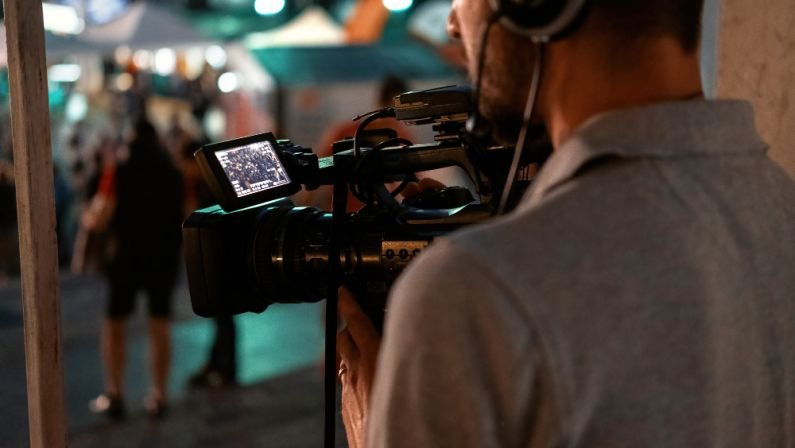From Netflix and Amazon Prime Video to HBO and Hulu, online streaming platforms are everywhere.
Over the last few years, these platforms have created some of the best original content, as well as making back catalogs of old favorites like Friends and How I Met Your Mother easily available to viewers.
Top-Quality Original Programming
The caliber of original TV series and films produced by streaming giants like Netflix, Amazon Prime Video, and other leading platforms continues to set new industry standards. Audiences now expect cinematic storytelling, high production values, and innovative content from these services.
At the 2024 Oscars, Netflix received 18 nominations, including Best Picture for Maestro and Nyad, demonstrating the platform’s ongoing influence in the film industry. These achievements extend beyond English-language content, highlighting the global reach of streaming originals.
International productions continue to earn critical acclaim. For example, the South Korean series Squid Game became a global phenomenon, winning multiple Emmy Awards, while the Spanish hit La Casa de Papel (Money Heist) captivated viewers worldwide.
The End of English-Language Media Dominance?
The rise of streaming platforms has propelled non-English audiovisual productions into the spotlight, allowing them to reach vast new audiences and achieve unprecedented popularity.
In the past, English-language movies and series dominated global exports, with limited foreign-language content making its way to English-speaking markets like the US and UK. Today, that dynamic is shifting, as viewers embrace stories from around the world—often with the help of subtitles and dubbing—making international hits more accessible than ever.
With the help of subtitles and dubbing, people have discovered shows they never would have seen on regular television.
Some of the most popular series on Netflix in languages other than English include:
Money Heist (Spain, Spanish)
Sacred Games (India, Hindi)
Devilman Crybaby (Japan, Japanese)
Marseille (France, French)
The Mechanism (Brazil, Brazilian Portuguese)
Subarra (Italy, Italian)
The Protector (Turkey, Turkish)
Narcos (Colombia/USA, Spanish/English)
The Rain (Denmark, Danish)
DARK (Germany, Germany)
Jinn (Jordan, Arabic)
Audiovisual Translators Make Great TV Accessible
The surge in international content shows no signs of slowing down, as audiences around the world continue to embrace stories in a variety of languages and genres.
Recognizing the importance of cultural diversity, the European Union has implemented regulations to ensure that European cinema and television are well-represented on streaming platforms.
Since 2018, EU legislation has required that at least 30% of the content on on-demand video services be of European origin, supporting local creative industries and ensuring viewers have access to a rich array of European productions.
Additionally, these regulations mandate that streaming platforms financially contribute to the development and promotion of European audiovisual works, further strengthening the industry.
Global platforms like Netflix and Amazon Prime Video now operate in nearly 200 countries, offering an ever-expanding library of translated and localized content. The availability of languages varies by title and region, often influenced by licensing agreements and audience demand.
Behind the scenes, a dedicated community of skilled audiovisual translators works tirelessly to dub and subtitle hundreds of hours of television and film each week, making international entertainment accessible to all.
These professionals expertly navigate linguistic, cultural, and technical challenges, ensuring that viewers everywhere enjoy seamless, high-quality experiences—no matter what language they speak.
Who Is Using Closed Captions?
As well as linguistic translation through subtitles and dubbing, closed captions (subtitles which include audio information other than language, such as background noises) are also available on video streaming platforms and are extremely popular.
While captions are chiefly there to aid the deaf and hard of hearing (audio descriptions are also often available in the original language and sometimes in other widely spoken languages like English) there are many reasons that people use this function.
These reasons range from people liking to multitask, people watching videos in public places such as on their commute to work, to helping them decipher complicated plots, or allowing them to watch TV while eating noisy snacks, not to mention language learners who use subtitles as a study aid.
Subtitles and Captions on Social Media
It’s also worth noting the increase in the use of closed captions and subtitles on social media.
As we scroll through our Instagram or Facebook feeds, we routinely come across videos.
Luckily, the audio of these videos is not automatically activated, saving us from embarrassment as we scroll on a quiet train carriage or in a library.
Often these videos use subtitles or closed captions so that there is no need to turn the sound on to watch the video.
Many of the captions used are created by automated services, and in fact, some sites like Facebook and YouTube offer automatic captions on all English videos.
However, while helpful in a pinch, they are notoriously inaccurate.
While you may get away with using a computerized closed caption service, for linguistic translation hiring a professional translation service is highly recommended.
Are you looking for a professional translation service for your audiovisual content? BeTranslated has the right translator for you.
Get in touch for more information or a free, no-obligation quote today.





